14 TOP THINGS TO DO
Overview Table
| Name | Appeal | Type | Visit | Cost | |
|---|---|---|---|---|---|
| 1 | ➡️ Sarlat | ✦✦✦✦✦ | Village | - | - |
| 2 | Lascaux Cave | ✦✦✦✦✦ | Parietal Art | Guided | Paid € |
| 3 | Balloon | ✦✦✦✦✦ | Flight | Tour | Paid € |
| 4 | River Kayak | ✦✦✦✦✧ | Kayak | Rental | Paid € |
| 5 | Marqueyssac Garden | ✦✦✦✦✧ | Garden + Panorama | Self | Paid € |
| 6 | ➡️ Domme | ✦✦✦✦✧ | Village | - | - |
| 7 | ➡️ Beynac-et-Cazenac | ✦✦✦✧✧ | Village | - | - |
| 8 | Eyrignac Garden | ✦✦✦✧✧ | Garden | Self | Paid € |
| 9 | ➡️ Périgueux | ✦✦✦✧✧ | Town | - | - |
| 10 | Château des Milandes | ✦✦✦✧✧ | Castle & Garden | Self | Paid € |
| 11 | Gabarre River Cruise | ✦✦✦✧✧ | River Cruise | Tour | Paid € |
| 12 | ➡️ Castelnaud-la-Chapelle | ✦✦✦✧✧ | Village | - | - |
| 13 | ➡️ Brantôme | ✦✦✦✧✧ | Village | - | - |
| 14 | ➡️ Monpazier | ✦✦✦✧✧ | Village | - | - |
1. Sarlat Village

Overall Appeal ✦✦✦✦✦
Sarlat, officially Sarlat-la-Canéda, is a beautifully preserved small medieval town in the Dordogne region, known for its golden limestone buildings and winding cobblestone streets. The town’s architecture is a testament to its rich history, reflecting styles from the 14th to the 18th centuries.
- Village Itself ✦✦✦✦✦
- Sarlat Market ✦✦✦✧✧
- Sarlat Cathedral ✦✦✦✧✧
- etc.
2. Lascaux Cave
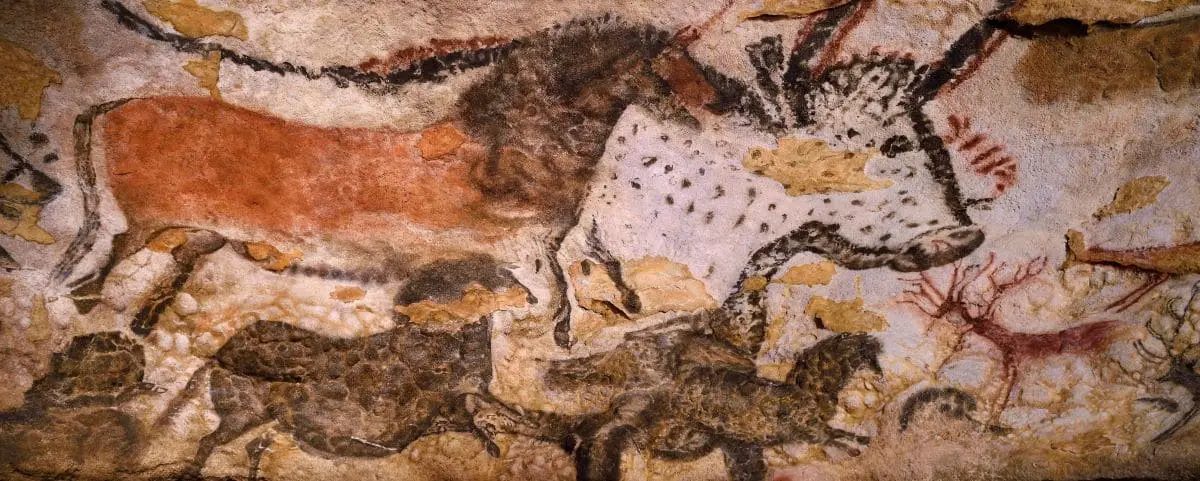
Appeal ✦✦✦✦✦
Type Parietal Art
Visit Guided
Cost Paid
French Name
Grotte de Lascaux
Lascaux Cave discovered in 1940 is a UNESCO World Heritage site renowned for its extraordinary Paleolithic cave paintings. The cave contains some of the best-preserved and most complex depictions of prehistoric art.
Today, there are 4 Lascaux sites, but only Lascaux II and IV are open to visitors.
Lascaux II and IV are close to each other, but visiting just one of them is enough.
- Lascaux I
The original cave, opened to the public in 1948, was definitively closed in 1963 due to deterioration caused by visitors.
- Lascaux II
This is an exact replica of the two main sections of the original cave. Opened in 1983, it was created to balance the need for conservation with public interest.
This site offers a more “natural” experience, similar to the original Lascaux I cave.
🏞️ Google Images Overview – Interior
⚙️ Visitor Info (Official Website)
- Lascaux III
Unlike the fixed replica of Lascaux II, Lascaux III consists of a traveling exhibition, showcasing reproductions of the cave’s art around the world.
- Lascaux IV
Opened in 2016, the International Centre for Cave Art, or Lascaux IV, offers a comprehensive digital and physical reproduction of the entire Lascaux cave system. It also includes extensive interpretative displays that explore the archaeological, artistic, and cultural significance of the site.
This site is more modern and larger, offering additional rooms (still related to cave art) along with the reproduction of the original Lascaux I cave. (It is also more accessible for people with reduced mobility).
3. Balloon

Appeal ✦✦✦✦✦
Type Flight
Visit Guided Tour
Cost Paid
Experience the Dordogne from above with a hot air balloon ride. This flight offers panoramic views of the region’s rolling hills, rivers, and historic castles.
4. Kayak
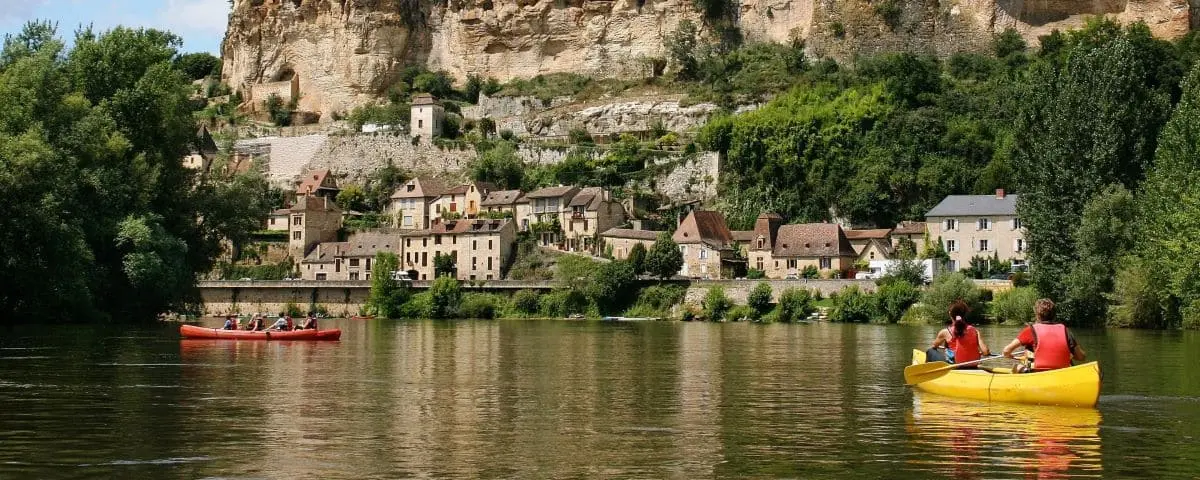
Appeal ✦✦✦✦✧
Type Kayak
Visit Rental
Cost Paid
Kayaking on the Dordogne River is a popular outdoor activity that allows visitors to explore the region’s waterways and landscapes. It offers a unique perspective of the area’s limestone cliffs, lush greenery, and historic sites.
5. Marqueyssac Garden
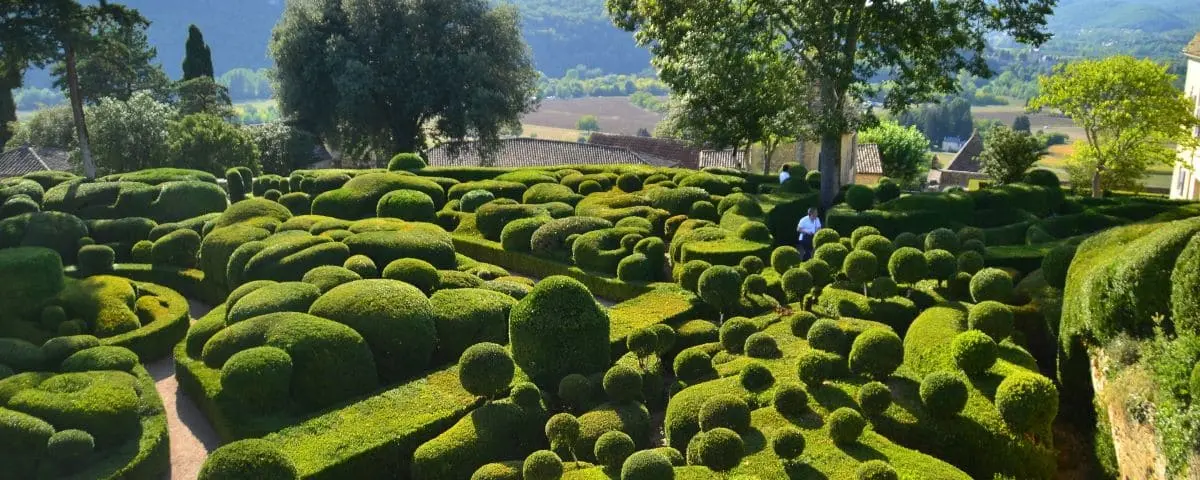
Appeal ✦✦✦✦✧
Type Garden + Panorama
Visit Self-guided
Cost Paid
French Name
Jardins de Marqueyssac
The Marqueyssac Gardens are a stunning collection of manicured landscapes, famous for their elaborate topiary. The gardens, designed in the 19th century, feature over 150,000 hand-pruned boxwood trees shaped into whimsical forms.
The garden’s location on a clifftop, situated 130 meters above the Dordogne River, provides spectacular panoramic views of the valley.
There is also a small 19th-century castle.
6. Domme Village

Overall Appeal ✦✦✦✦✧
Domme is a picturesque bastide town perched on a cliff overlooking the Dordogne River, known for its well-preserved medieval architecture and panoramic views. The town’s strategic position has made it an important historical site throughout the centuries.
- Village Itself ✦✦✦✦✧
- Viewpoints ✦✦✦✦✧
- etc.
7. Beynac-et-Cazenac Village
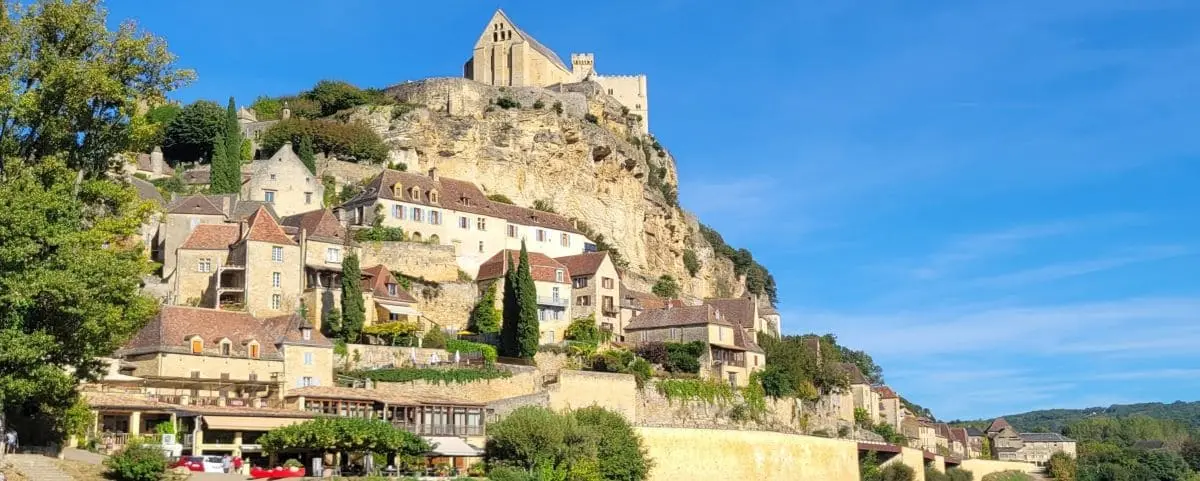
Overall Appeal ✦✦✦✧✧
Beynac-et-Cazenac is a charming village situated along the Dordogne River, renowned for its medieval architecture and imposing clifftop castle. The village’s stone houses and narrow streets offer a glimpse into its historical past.
➡️ 5 Things to Do in Beynac-et-Cazenac
- Beynac Castle ✦✦✦✧✧
- Viewpoint ✦✦✦✧✧
- Village Itself ✦✦✧✧✧
- etc.
8. Eyrignac Garden
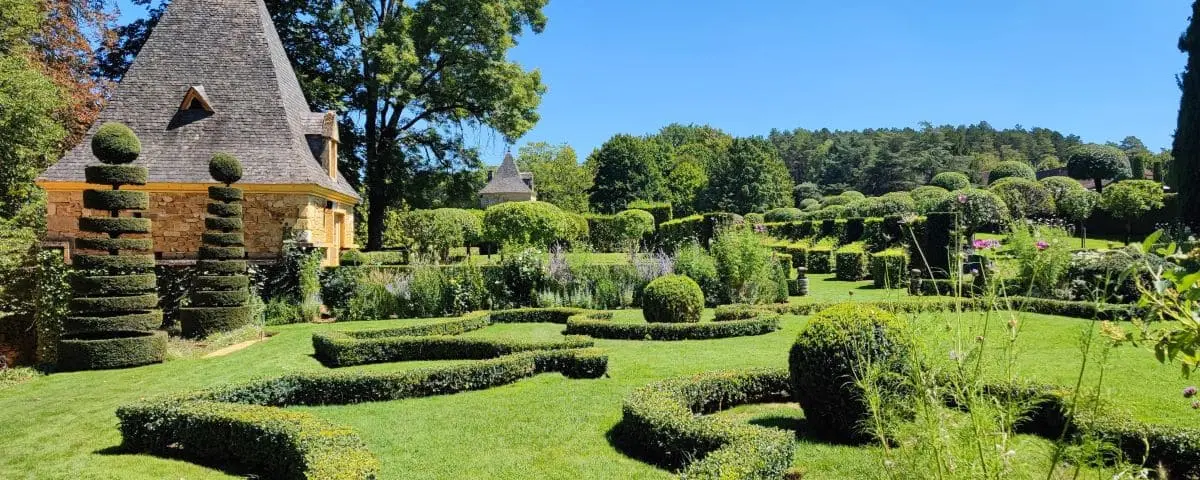
Appeal ✦✦✦✧✧
Type Garden
Visit Self-guided
Cost Paid
French Name
Jardins du Manoir d’Eyrignac
Eyrignac Garden is a beautifully landscaped garden known for its elegant topiary, French formal gardens, and diverse plant species.
9. Périgueux Town
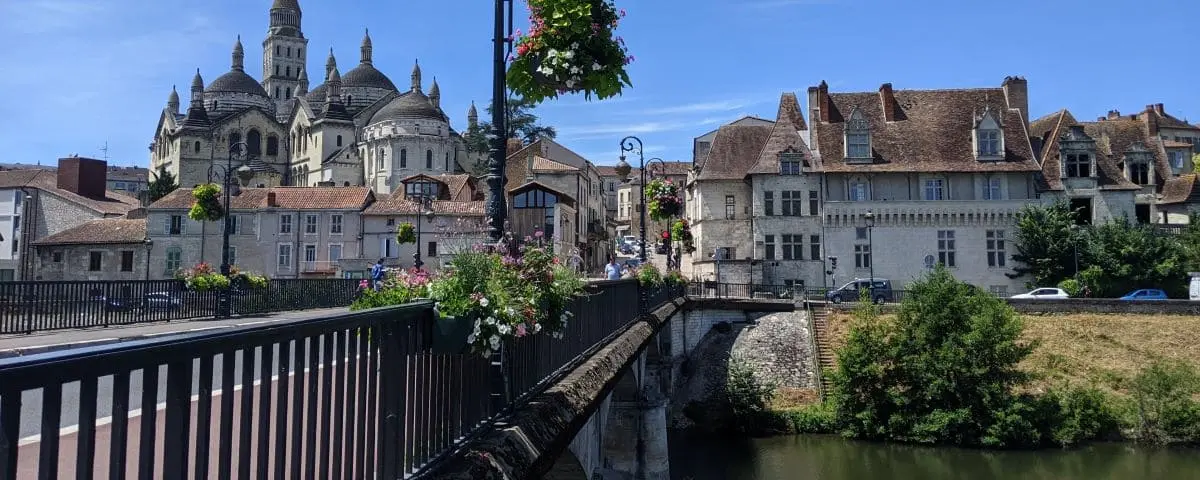
Overall Appeal ✦✦✦✧✧
Périgueux is a historic town in the Dordogne region, renowned for its rich Roman heritage and medieval architecture.
Périgueux’s history dates back to Roman times when it was known as Vesunna. During the medieval period, Périgueux became a religious center, with the construction of the Saint-Front Cathedral.
The town is also traversed by the Isle River, adding an extra touch of charm.
➡️ 16 Things to Do in Périgueux
- Périgueux Cathedral ✦✦✦✦✧
- Town Center ✦✦✦✦✧
- etc.
10. Milandes Castle & Garden
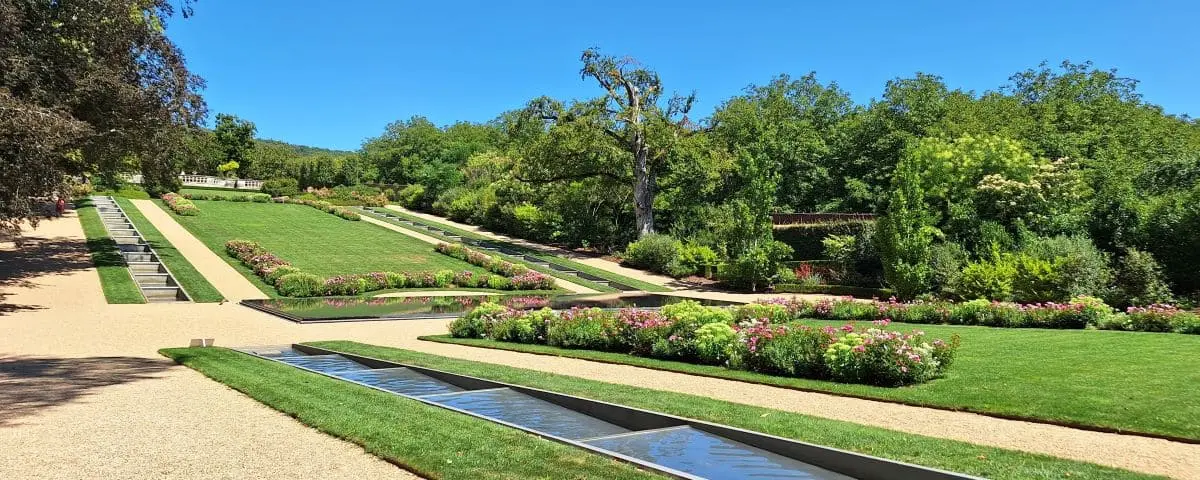
Appeal ✦✦✦✧✧
Type Castle & Garden + Bird of Prey
Visit Self-guided
Cost Paid
French Name
Château des Milandes
Château des Milandes is a historic castle from the 15th century famous for its association with American entertainer Josephine Baker who purchased the estate in 1947, now with displays tracing her life.
The estate has also beautifully landscaped gardens.
Another highlight of the estate is its bird of prey shows.
🏞️ Google Images Overview – Exterior
🏞️ Google Images Overview – Interior
11. Gabarre River Cruise
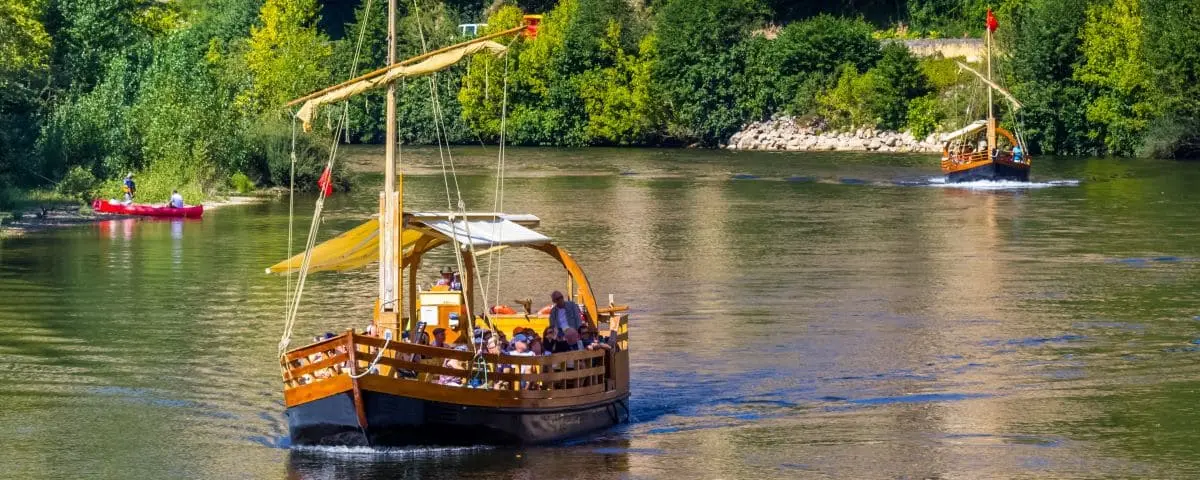
Appeal ✦✦✦✧✧
Type River Cruise
Visit Tour
Cost Paid
Enjoy a relaxing boat cruise on a traditional gabarre, exploring the scenic Dordogne River. The cruise offers picturesque views of medieval villages, towering cliffs, and lush landscapes.
12. Castelnaud-la-Chapelle Village
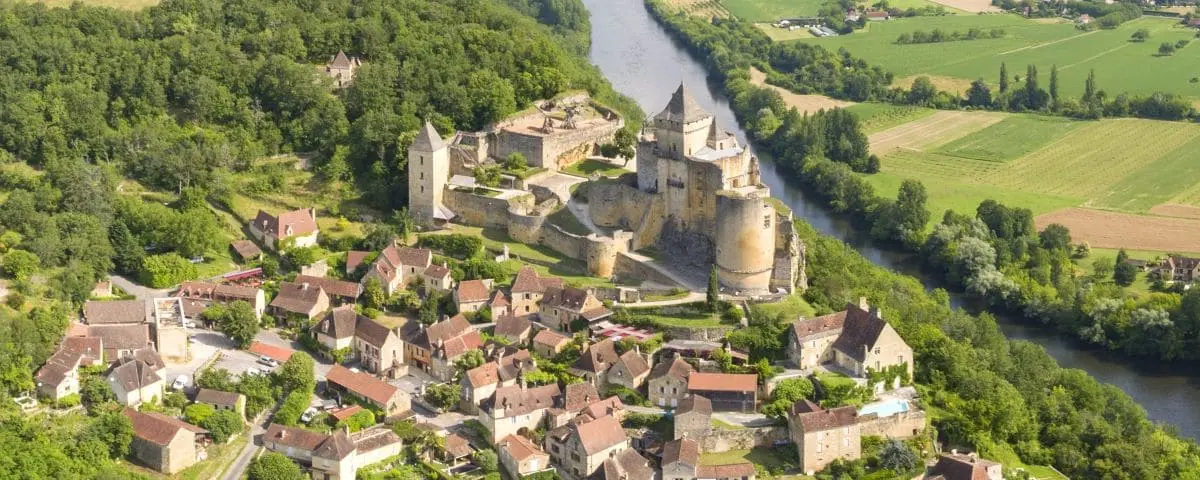
Overall Appeal ✦✦✦✧✧
A quaint village known for its impressive medieval castle, which houses a museum of medieval warfare. The village also offers panoramic views of the Dordogne Valley.
➡️ 4 Things to Do in Castelnaud-la-Chapelle
- Castle ✦✦✦✧✧
- Village Itself ✦✦✧✧✧
- etc.
13. Brantôme Village
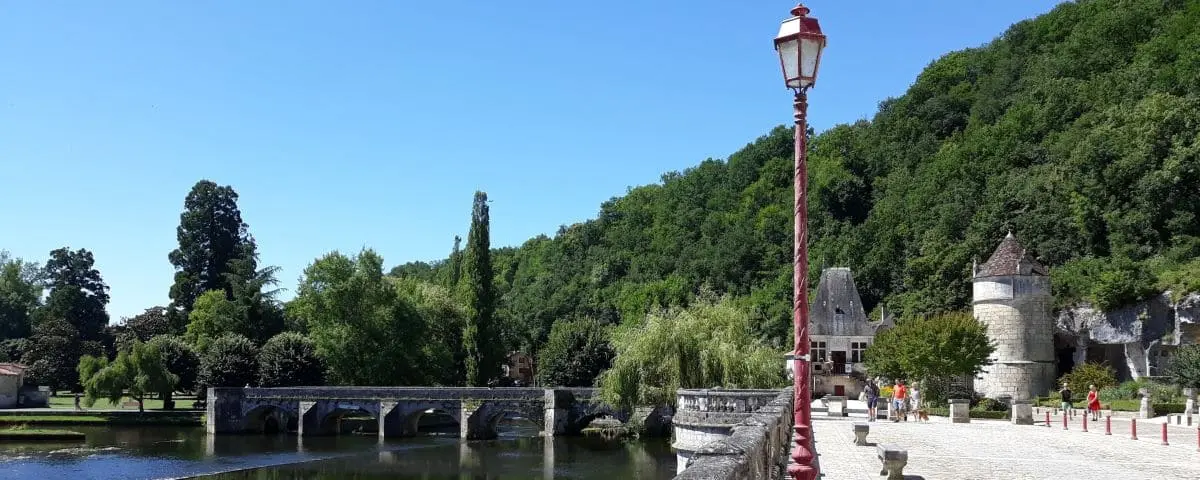
Overall Appeal ✦✦✦✧✧
Brantôme, officially Brantôme-en-Périgord and often called the “Venice of the Dordogne”, is known for its picturesque canals and charming architecture set along the Dronne River.
Brantôme’s history is notable for its abbey, which was established in the 8th century during King Charlemagne’s reign, and for its role as a center of religious life throughout the medieval period.
➡️ 10 Things to Do in Brantôme
- Village Itself ✦✦✦✧✧
- etc.
14. Monpazier Village
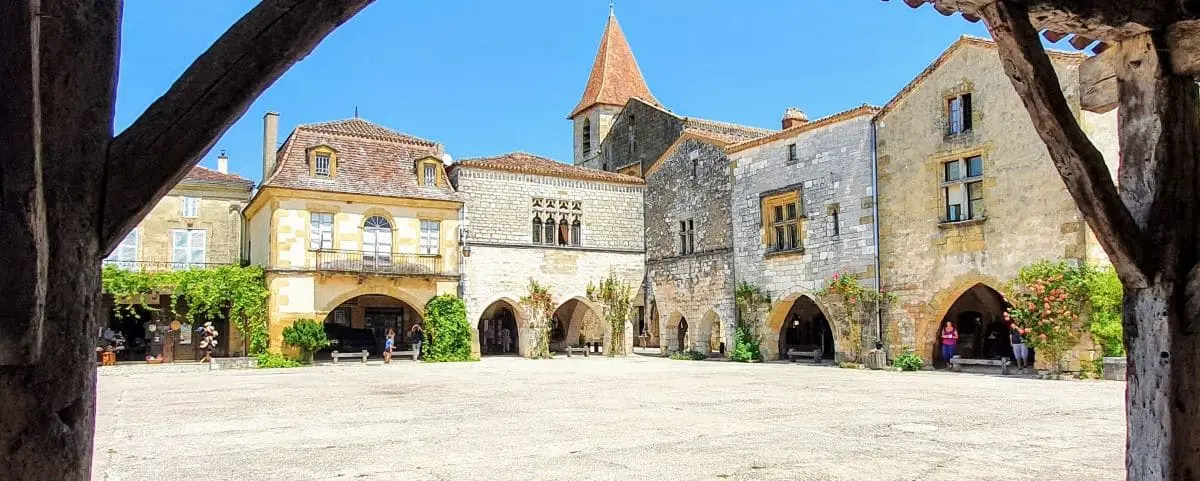
Overall Appeal ✦✦✦✧✧
Monpazier is a well-preserved bastide town known for its harmonious layout and charming medieval architecture. This village is an excellent example of the planned towns developed during the 13th century in the Dordogne region.
Monpazier was established in 1284 by Edward I of England and is renowned for its orderly streets and central marketplace. The town’s layout reflects the typical bastide design, with a grid pattern and central square.
➡️ 4 Things to Do in Monpazier
- Village Itself ✦✦✦✦✧
- etc.
15 SECONDARY THINGS TO DO
➡️ 15 Unusual Things to Do in Dordogne
- Bergerac Town ✦✦✦✧✧
- Roque-Gageac Village ✦✦✦✧✧
- etc.


